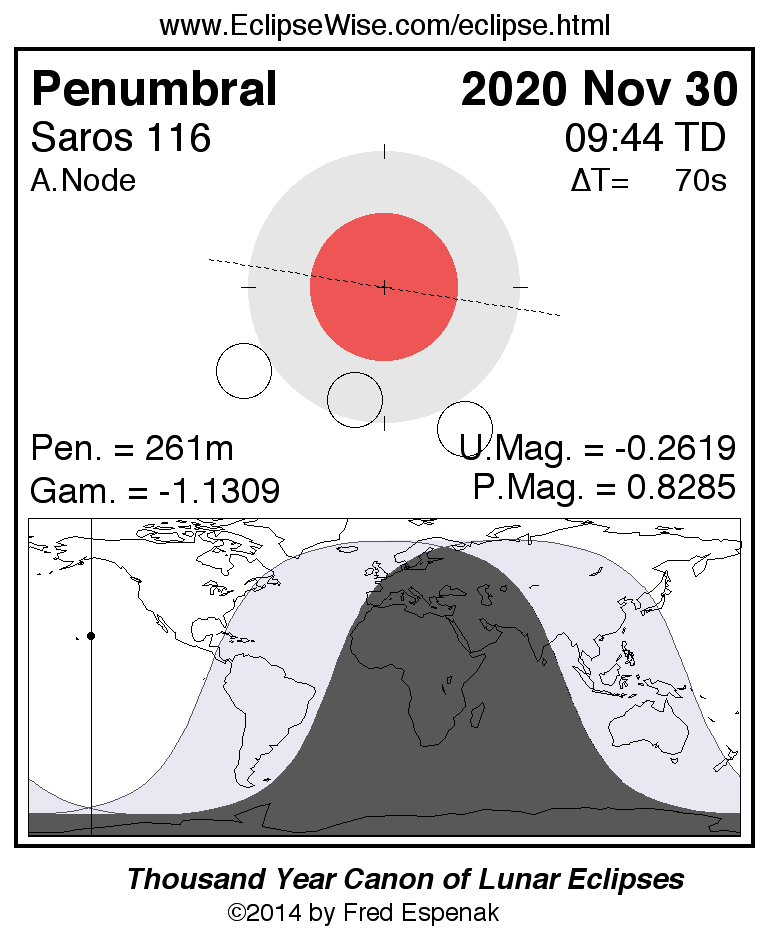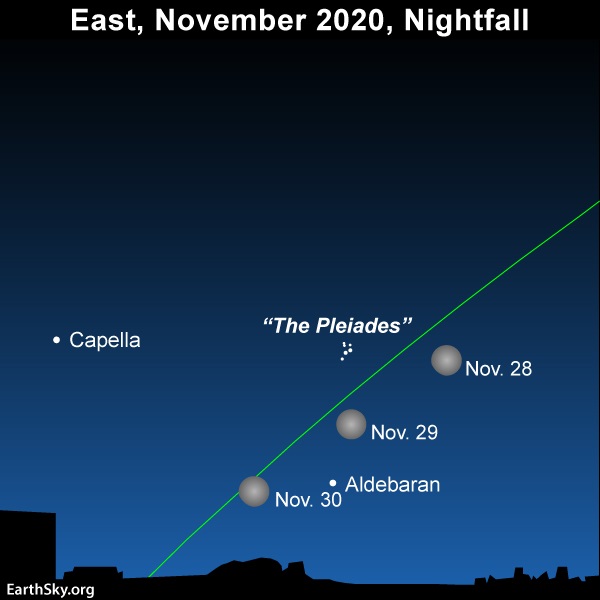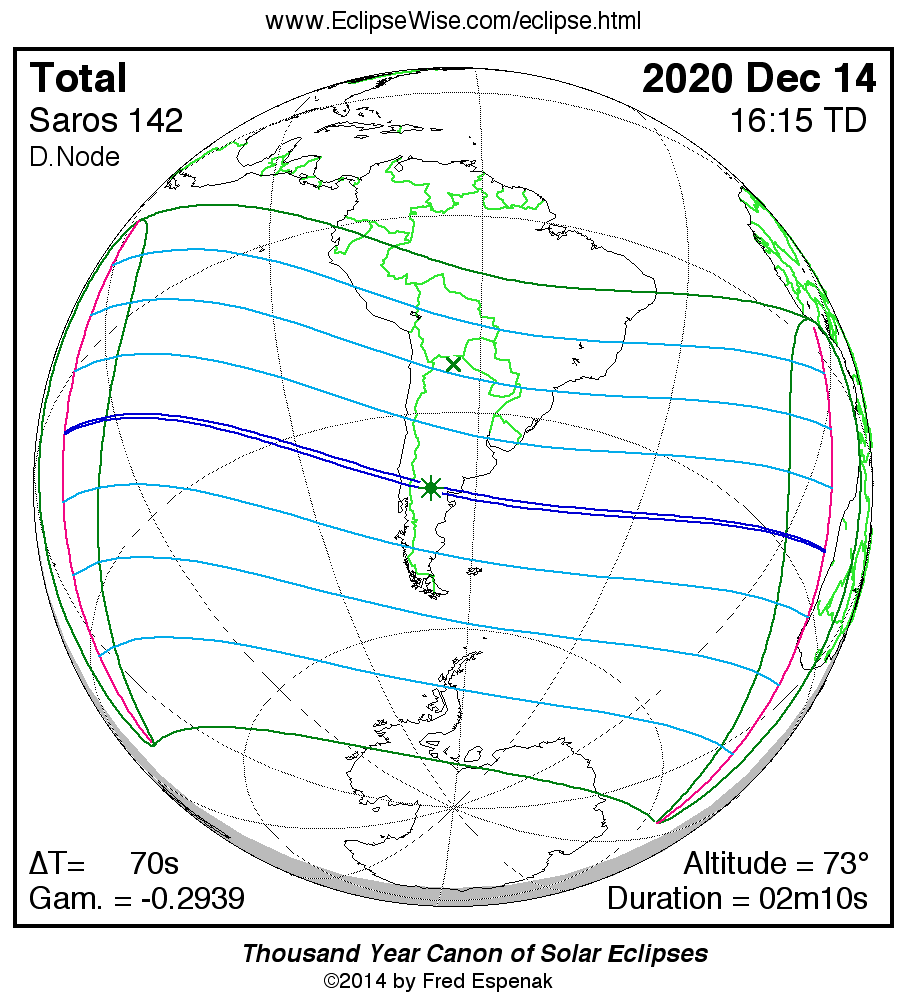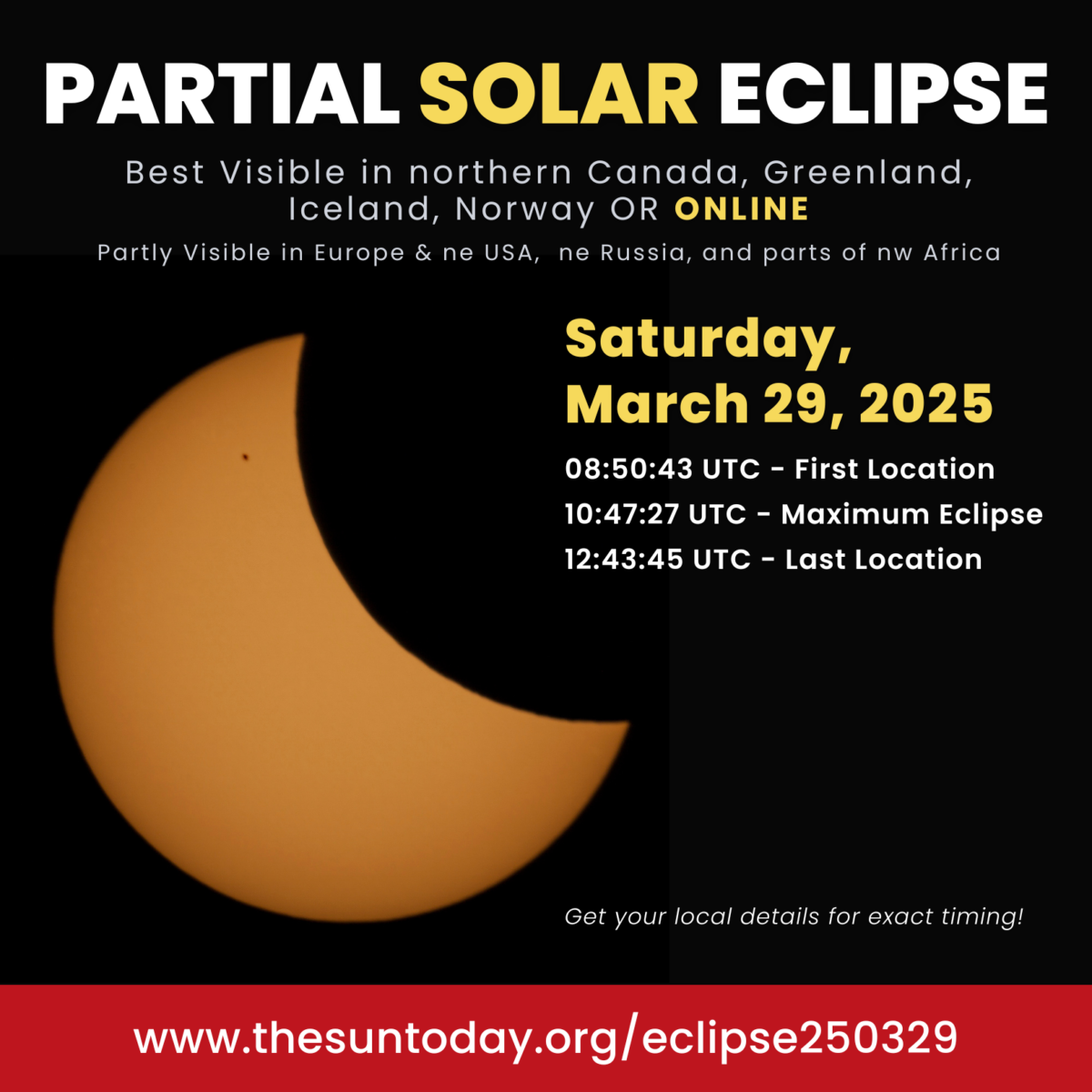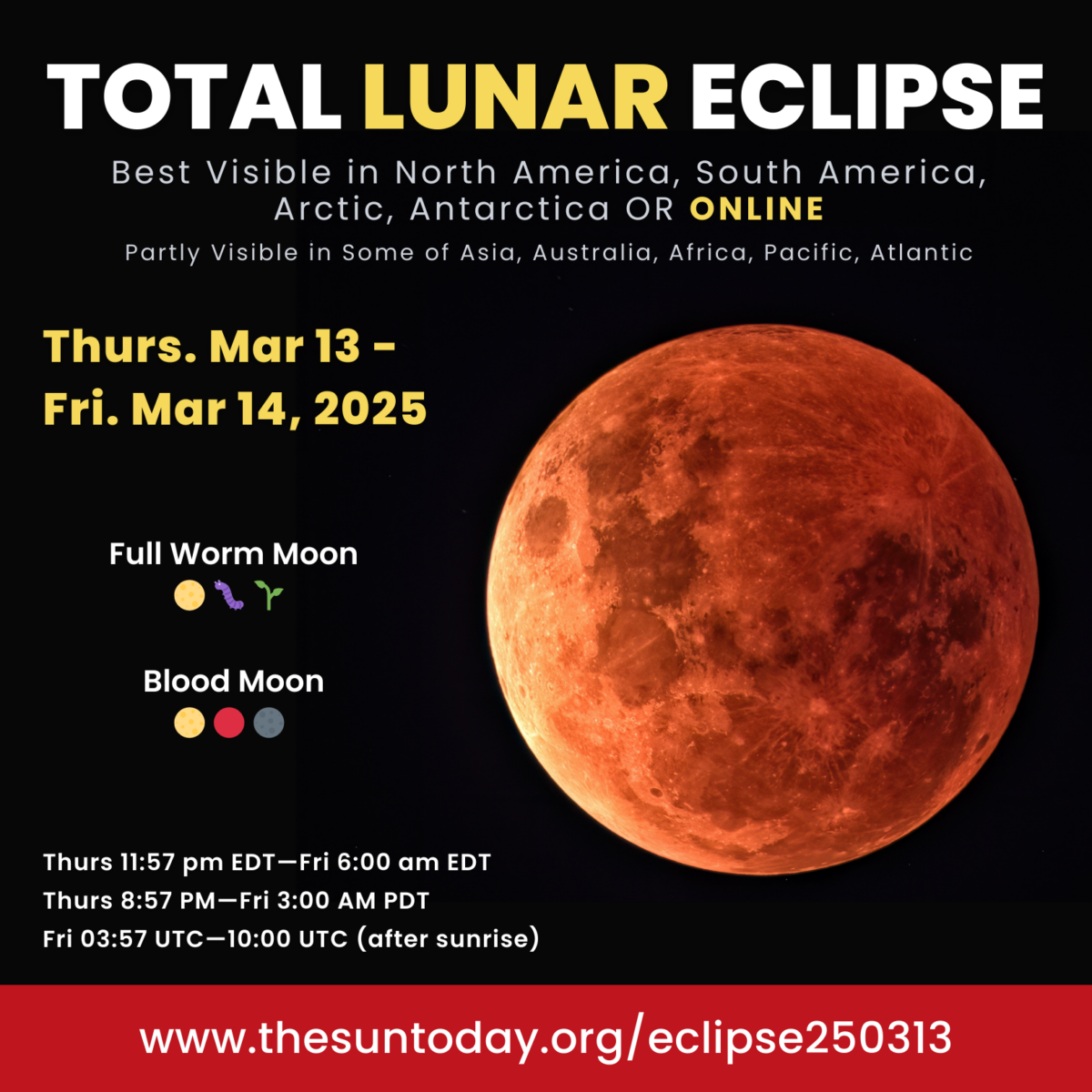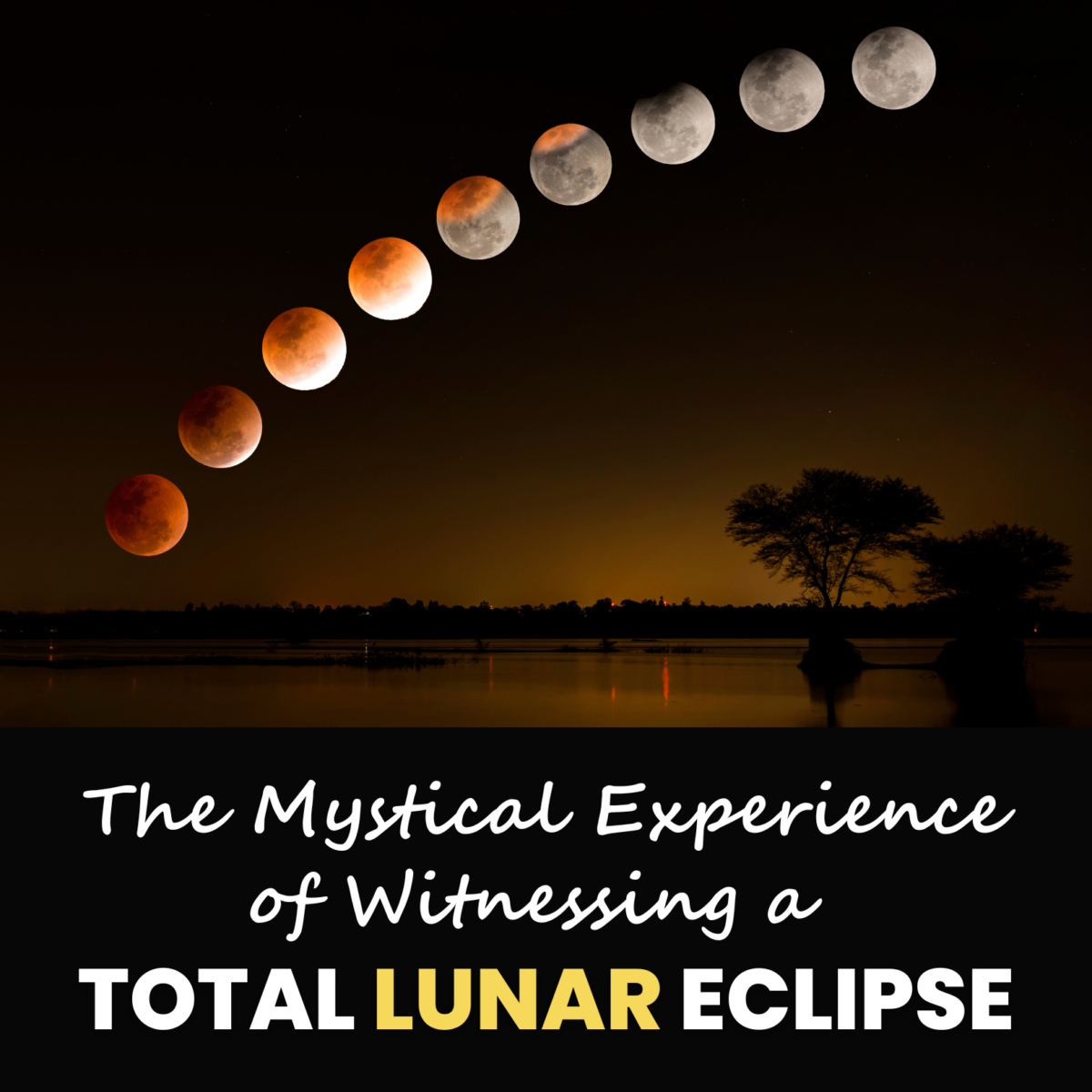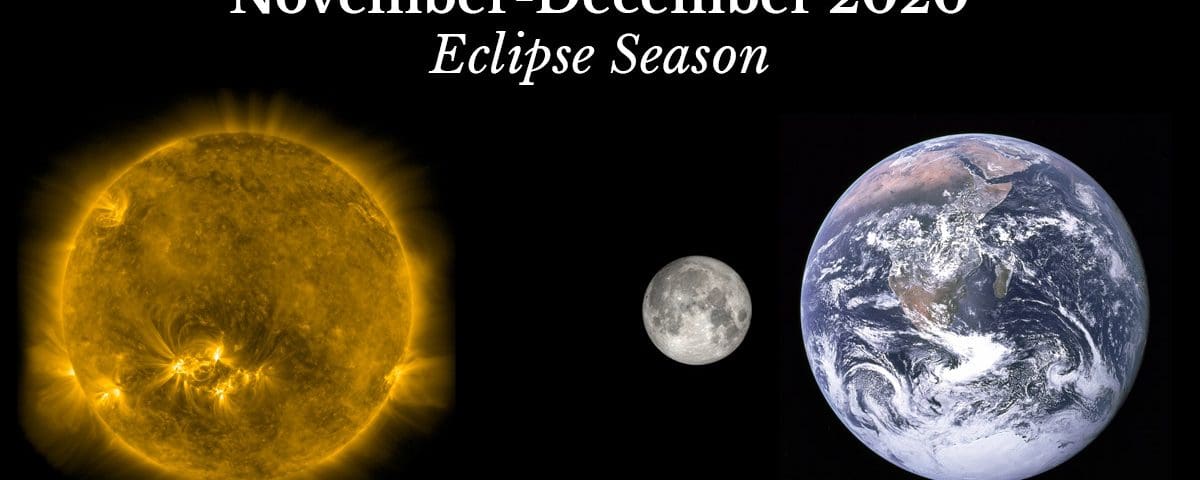
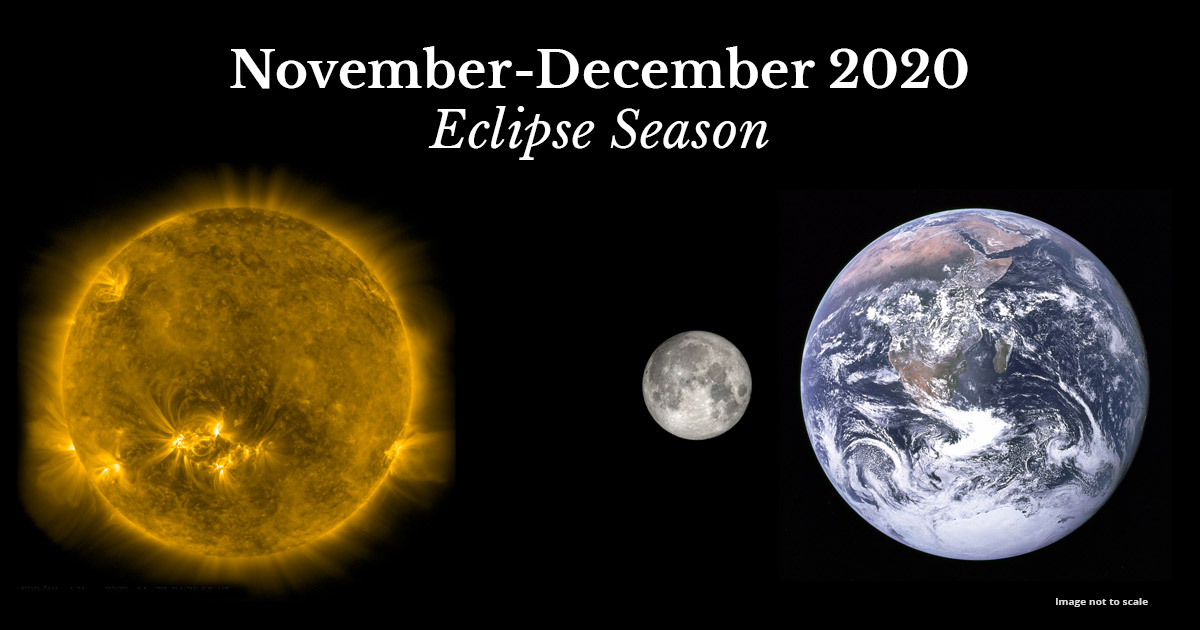
The second eclipse season of 2020 is here with a penumbral lunar eclipse & total solar eclipse!
Every year there are typically two eclipse seasons, which contain at least two and sometimes three eclipses. Each eclipse season is roughly 34 days long and repeats at 173.4 day intervals (close to 6 months).
The first eclipse season for 2020 has three eclipses:
- a lunar eclipse on June 5,
- a solar eclipse on June 21,
- and the third eclipse of that eclipse season, a lunar eclipse, on July 5.
- Three eclipses in a season won’t happen again until 2029!
The second eclipse season for 2020 has two eclipses:
- a penumbral lunar eclipse on November 30, 2020
- and a total solar eclipse on December 14, 2020.
November 30, 2020 Penumbral Lunar Eclipse
Lunar eclipses happen with the Earth moves between the Sun and the Moon. The Earth blocks the Sun’s light from reaching the Moon.
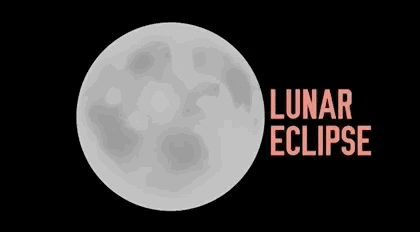
A penumbral lunar eclipse happens because the alignment between the Sun, Earth & Moon is imperfect. The Moon will only pass through the fainter outer shadow of the Earth (the Penumbra) and not move into the darker shadow (the Umbra).
On November 30, the Moon will pass partly into the Penumbra, like this:
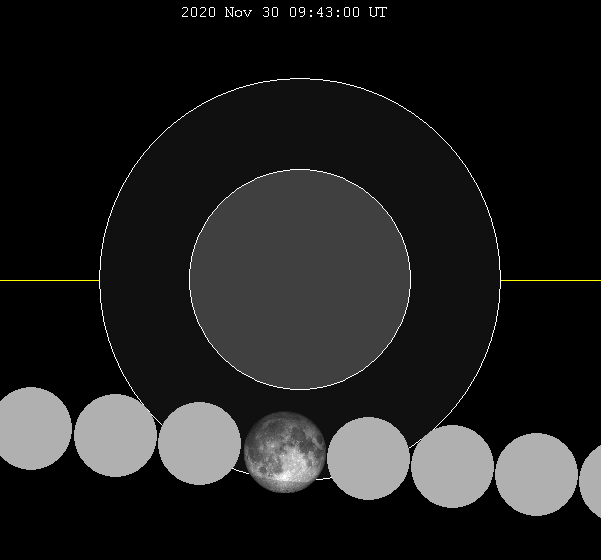
CREDIT: SockPuppetForTomruen at English Wikipedia – Own work, Public Domain
This article at TimeandDate.com goes into details of this, as summarized in these graphics:
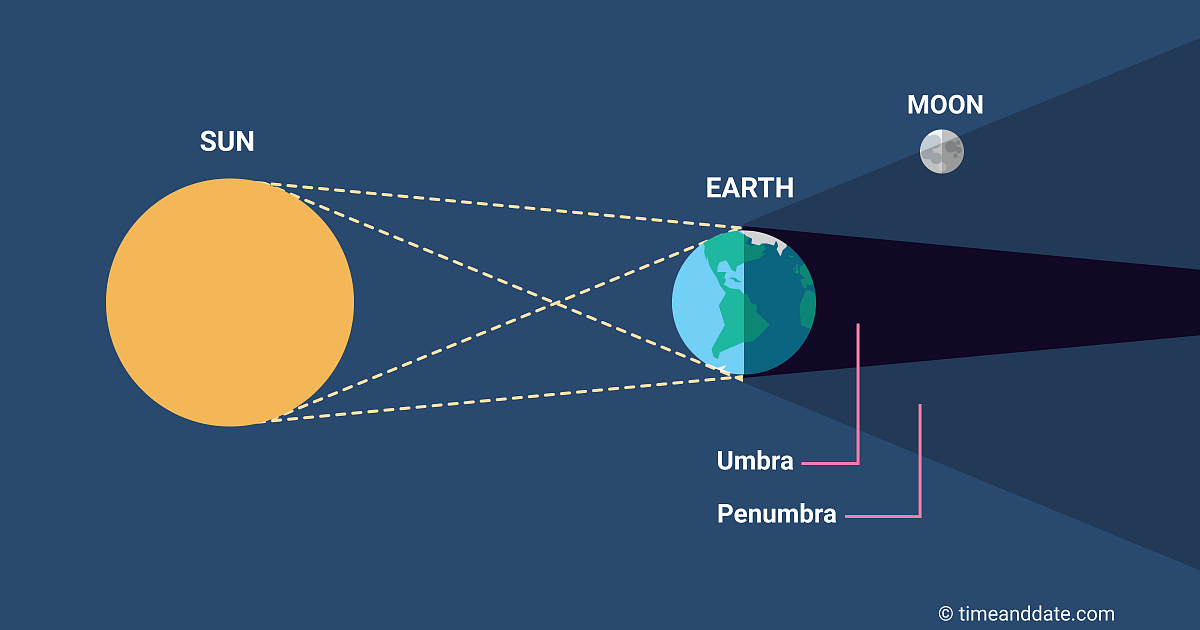
Sun, Earth, and Moon are not perfectly aligned during a penumbral eclipse. (Not to scale) CREDIT: timeanddate.com
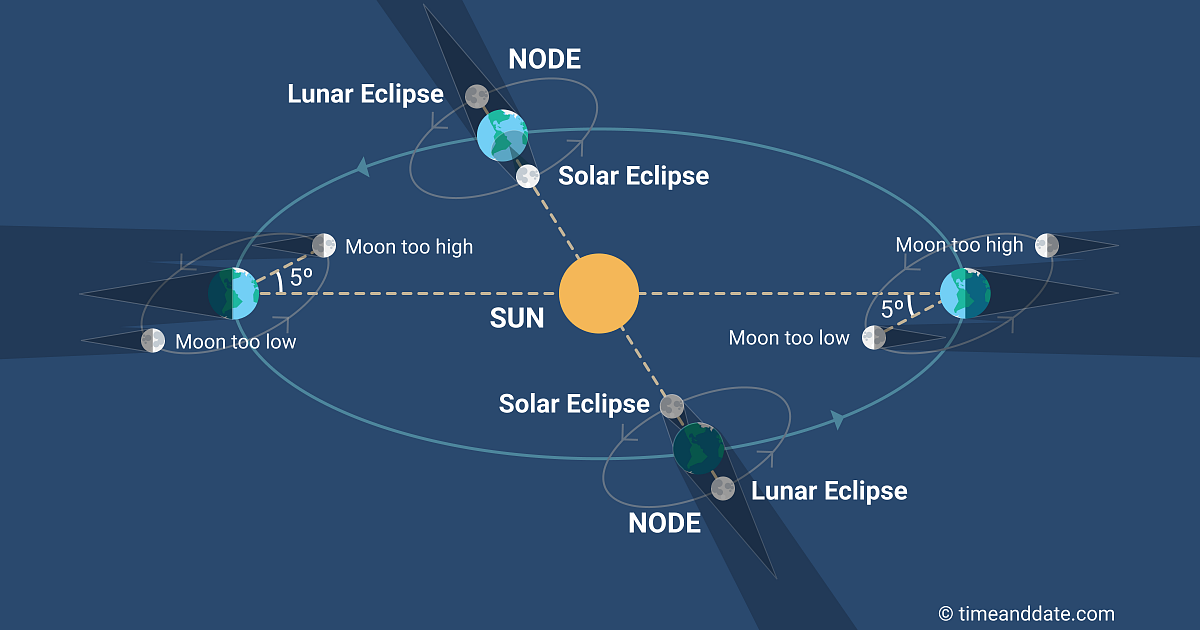
Lunar nodes are the locations where the Moon crosses the Earth’s orbital plane. CREDIT: timeanddate.com
The moon will perceptibly dim as it passes through the Earth’s southern penumbral shadow. The dimming can be faint to the naked eye, so don’t get disappointed if it does not have a “wow” effect. It won’t be a blood-red color like in a total lunar eclipse. In the Northern Hemisphere, observers may notice the upper part of the moon get slightly darker as about 83% of the moon will pass through Earth’s faint penumbral shadow. Here’s what to expect…
Great animations of the eclipse showing both global maps and what the eclipse would look like at direction locations can be found at timeanddate.com.
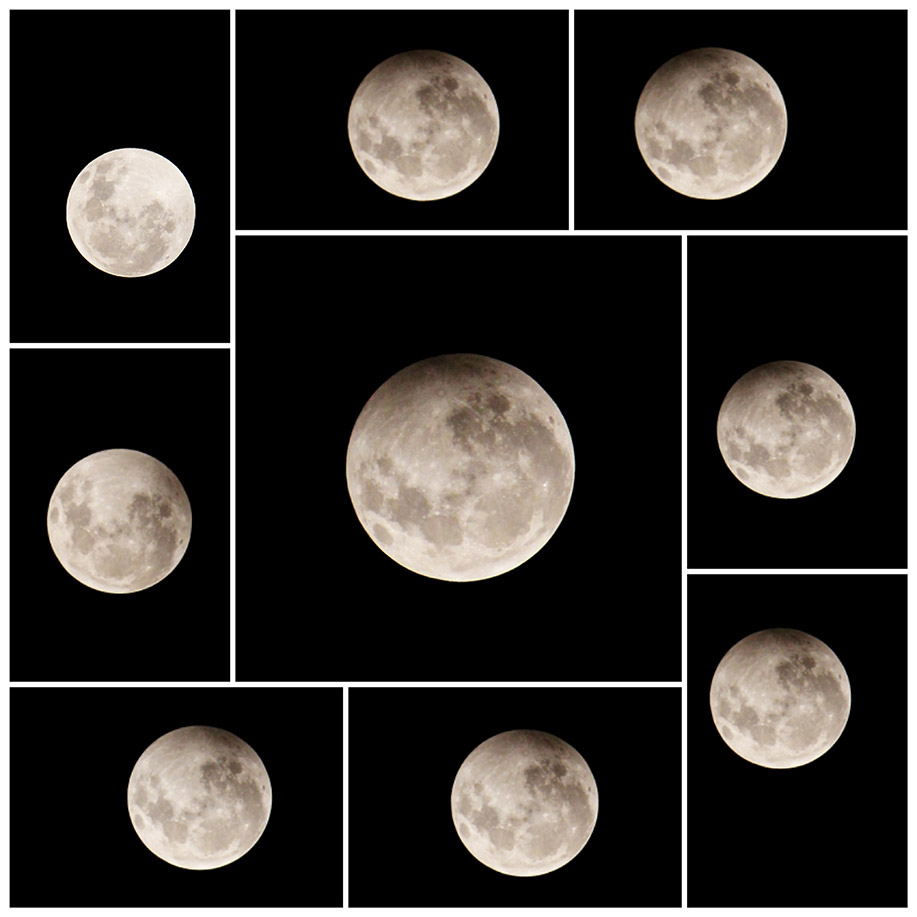
Penumbral lunar eclipse 2020 stages. The phases of a Penumbral lunar eclipse ‘Strawberry Moon’ (Super Moon) from the earth.
The next full Moon will occur on Monday, November 30, 2020, at 4:30 AM ET. It is also known as the Beaver Full Moon, or Frosty Moon. A Frosty Beaver Eclipse sounds fun, even if it’s not the most spectacular eclipse to observe.
The lunar eclipse on November 30, 2020 is a penumbral lunar eclipse visible in the Americas, the Pacific, Australia, and Asia. The areas where the eclipse is visible can be seen in this graphic from EclipseWise.com.
The line over the Pacific Ocean shows the meridian of the greatest eclipse at 9:42 UTC or 4:42 am EST. The moon is only passing through Earth’s penumbral shadow (the gray area in the figure) not the core or umbra (the red circle). This means the eclipse is very faint and so will not be visible for most.
There is a live eclipse stream from timeanddate.com available through YouTube.
Find out more about lunar eclipses here »

Bonus Sky Viewing Tips!
This site is run by Alex & his wife, Linda. We have been at home since March, but have used every night as an opportunity to #lookup! It’s become a fun hobby. We don’t have a telescope, just an old pair of binoculars and an app on our phone (Star Walk).
The November sky has some exciting things to look at close to sunset (exact timing depends on your location). #lookup and find Saturn & Jupiter. They are moving closer & closer together, so it’s a great time to start observing. The “Great Conjunction” happens on the December Solstice, (December 21, 2020). In their closest encounter since 1623, Jupiter and Saturn appear as a single star in the evening sky. DO NOT MISS THIS EVENT!! DETAILS…
We will share some more info soon on getting ready to see The Great Conjunction. Just start by finding the planets, and making sure you’ll be able to see them as they set. It will only be visible shortly after sunset on 12/21/2020, and Saturn & Jupiter will be lower in the sky than now. You’ll need to have a view of the horizon. We have already scouted out our viewing location!! Then watch every night as they get closer. Fingers crossed for clear skies that night!!
- It’s the closest Saturn & Jupiter will appear since 1623!!
- The last one was May 28, 2000, but it was difficult to see.
- Triple conjunction with Saturn, Jupiter & Venus occurred in 1981.
- The next one is October 31, 2040!
Also, look for Mars (reddish), “The Pleiades”, Capella, Aldebaran all at nightfall (before the eclipse starts). EarthSky.org is an excellent resource for where to look.
The Pleiades is AMAZING with binoculars! Even in the suburbs with bright lights, it was incredible on a clear night. We were able to see many stars in addition to the “seven sisters”.
Orion has also been beautiful, especially when rising up. It looked huge when near the horizon!! The rising moon gives the same effect, but it was fun to see a familiar constellation in a new way. (Linda’s non-scientific observations LOL)
Use the Star Walk app to find the best times & locations for observing.
We also use our phones to take photos of what we see. Nothing fancy, some just to play with on Instagram. Others as a quick way to make an observation about the positions of things we are looking at. We have a few spots with trees as landmarks that we always look from. We have been able to see the movement of the stars, planets, moon & sun.
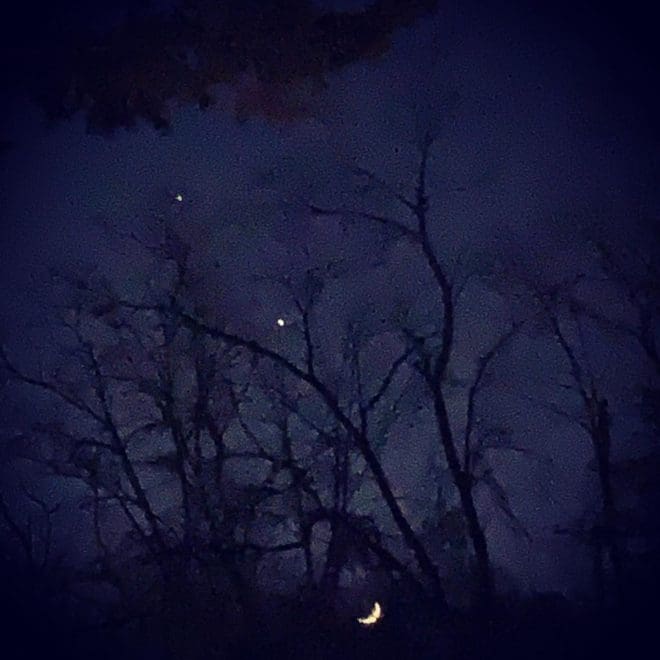
Saturn, Jupiter & Moon – 11-18-2020 – CREDIT: Linda Schenk
Linda does not have a science background (graphic design), so it’s hard for her to visualize complicated movements of things in space. This has helped. She likes to think about astronomers in centuries past making notes and drawings in notebooks to record movements over time. The iPhone is a lot easier. Try it!
Don’t forget to look for the International Space Station! You can find times for the ISS Flyover by visiting this site. Signup for text alerts. If you’re lucky it will appear to fly close to the planets or Moon. Don’t forget to wave! 🙂
Try these tips for keeping binoculars steady. Please send us photos if you use the chair or broom, especially if you get weird looks from your neighbors. 🤣 We just use the baseball cap, and it was also helpful when we were looking for C/2020 F3 (NEOWISE) in July. Alex rescued an exhausted baby bird that was stuck on a bridge. He put it between our 2 hats and carried it to safety.
Sky-watching has been an enjoyable activity to do socially-distanced but still make great connections with people. It’s fun to say to neighbors who are also on evening walks and say, “hey, want to see something cool?” and then point out the planets. We also post reminders on our personal social media accounts. One of the highlights of this strange year is the excitement of both kids and adults when they spot the planets or identify stars. Staying home & slowing down has some advantages. Try it and share the joy of the sky!
It has also brought us comfort during hard times & grief. Taking time to observe and be in the moment is a good time to heal. We both hope these simple tips can help you, too.

December 14, 2020 Total Solar Eclipse
Solar eclipses happen with the Moon moves between the Sun and the Earth. The Moon blocks the Sun’s light from reaching the Earth.
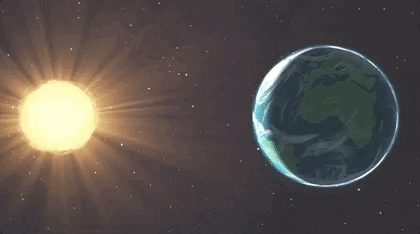
The solar eclipse on December 14, 2020 is a total solar eclipse. Totality is visible in the South Pacific, South Atlantic, and over land in Chile and Argentina. Total solar eclipses are the most exciting type of eclipse. Sadly, due to the pandemic, travel to these areas are limited, but stay tuned to watch online.
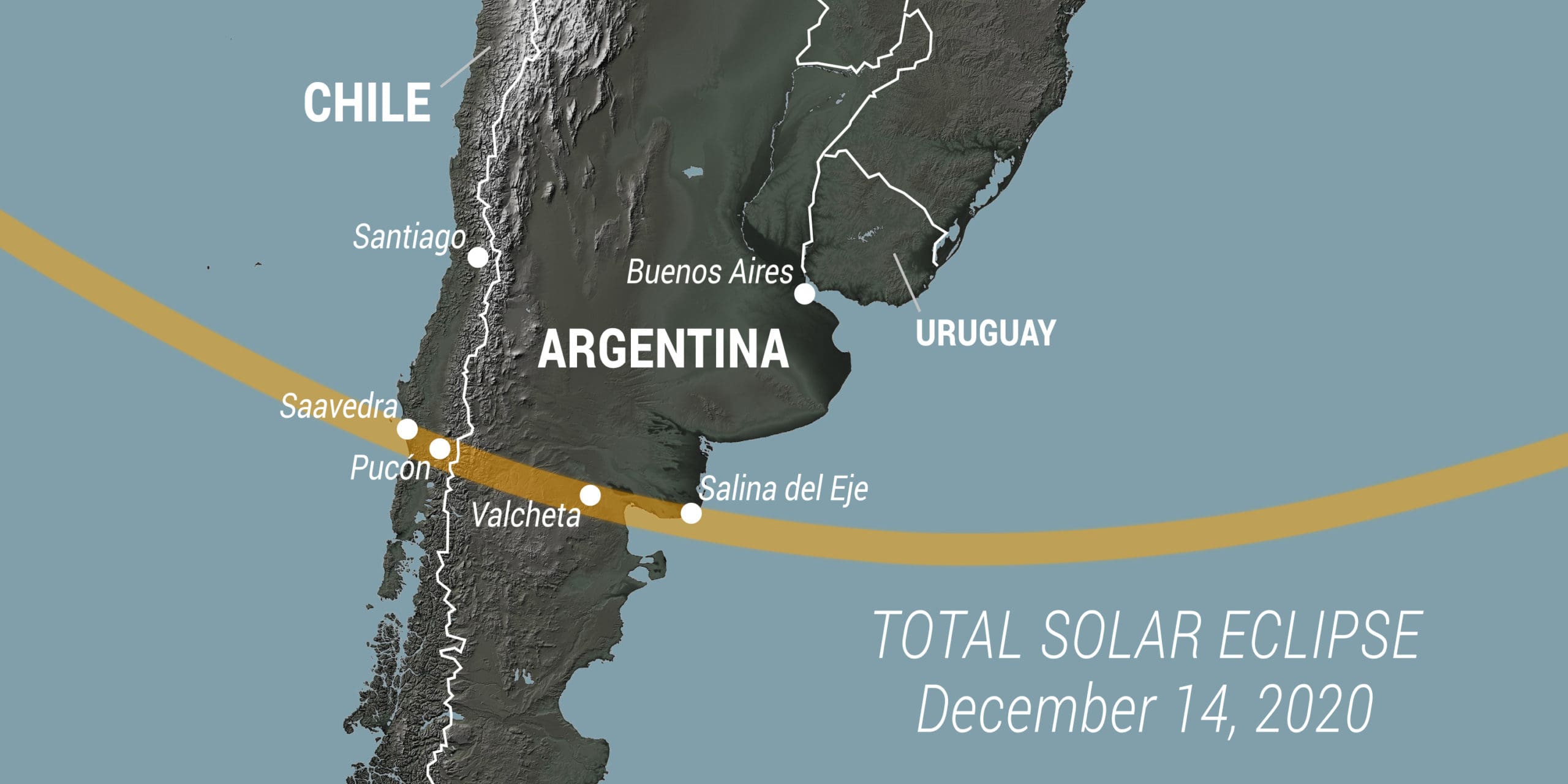
This shows the path of totality (yellow path) over Chile and Argentina for the December 14, 2020 total solar eclipse. credit: NASA
The areas where the eclipse is visible can be seen in this graphic from EclipseWise.com.
The blue lines over South America show the path of total with the lunar shadow moving from west to east. The green asterisk over Argentina is the point if greatest eclipse at 16:13 UTC or 11:13 am EST. The partial eclipse will be visible in the Pacific and Atlantic Oceans, Antarctica, some of South America, and part of Southern Africa. Again you can find great animations of the eclipse showing both global maps and what the eclipse would look like at direction locations at timeanddate.com.
| Event | UTC Time | EST Time |
|---|---|---|
| First location to see the partial eclipse begin | Dec 14 at 13:33:55 | Dec 14 at 8:33:55 am |
| First location to see the full eclipse begin | Dec 14 at 14:32:34 | Dec 14 at 9:32:34 am |
| Maximum Eclipse | Dec 14 at 16:13:28 | Dec 14 at 11:13:28 am |
| Last location to see the full eclipse end | Dec 14 at 17:54:18 | Dec 14 at 12:54:18 pm |
| Last location to see the partial eclipse end | Dec 14 at 18:53:03 | Dec 14 at 1:53:03 pm |
Several live streams of the total solar eclipse will be available including,
timeanddate.com (starts 13:00 UTC, 8 am EST)
CosmoSapiens (starts at 11:00 UTC, 6 am EST)
Exploratorium
“To keep our staff, our colleagues, and our communities safe during this coronavirus pandemic, the Exploratorium won’t be sending a team to Chile to cover the December 14, 2020 solar eclipse as planned. We hope to see you again for an annular solar eclipse in 2023—and in the meantime, you can check out our extensive video archives of eclipse science and coverage of past eclipses.” www.exploratorium.edu/eclipse
NASA in Spanish (Coming Soon)
Many of the plans for eclipse chasers from around the world have changed and many canceled because of the COVID-19 pandemic. This has meant that some of the details for groups like the Exploratorium and NASA have not yet been finalized. This includes the details of the specific feeds and live shows. Both NASA and the Exploratorium will be working with the Institute of Astrophysics, Pontificia Universidad Catolica de Chile to share their feeds of the event. We will update the details once we know more.
Find out more about solar eclipses here »
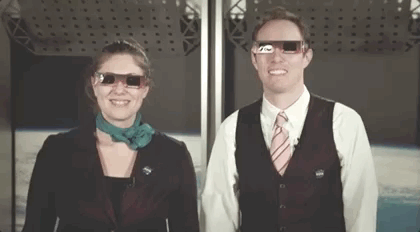
credits: EclipseWise.com, timeanddate.com, NASA, SockPuppetForTomruen at English Wikipedia – Own work, Public Domain


